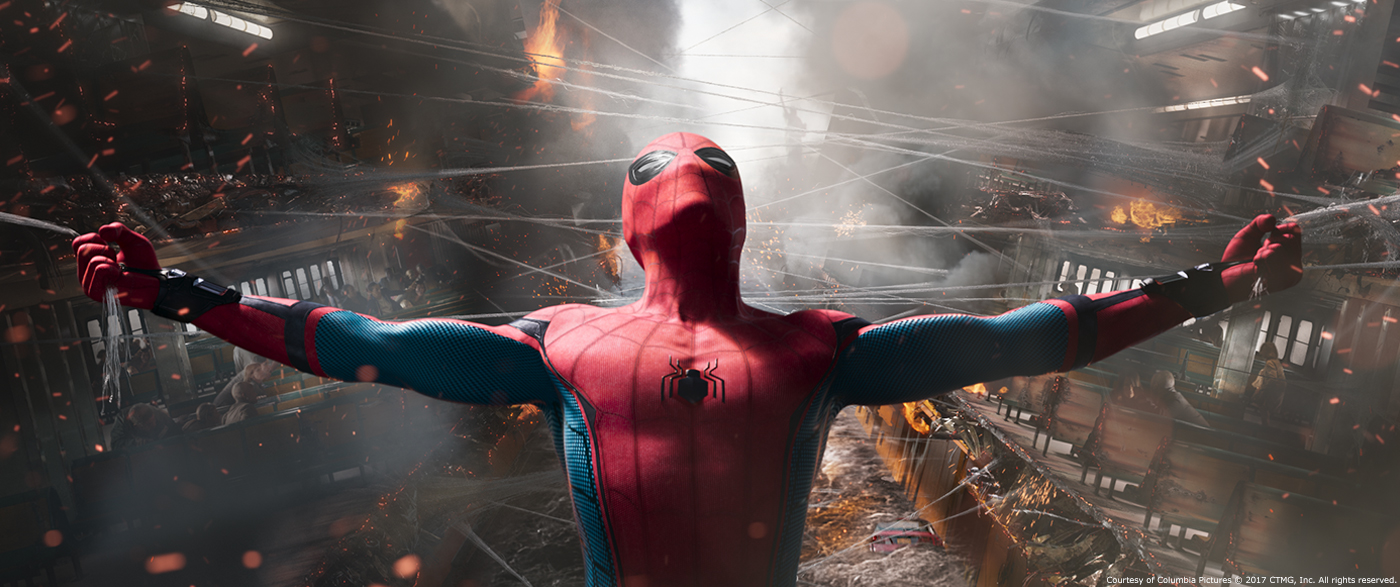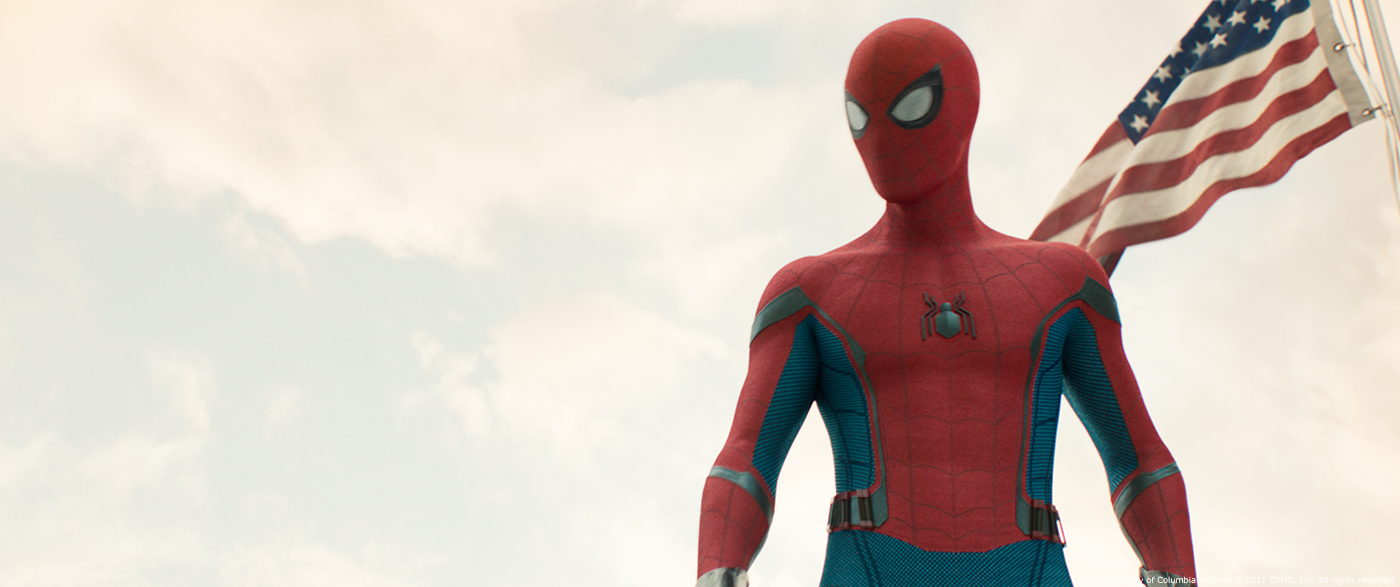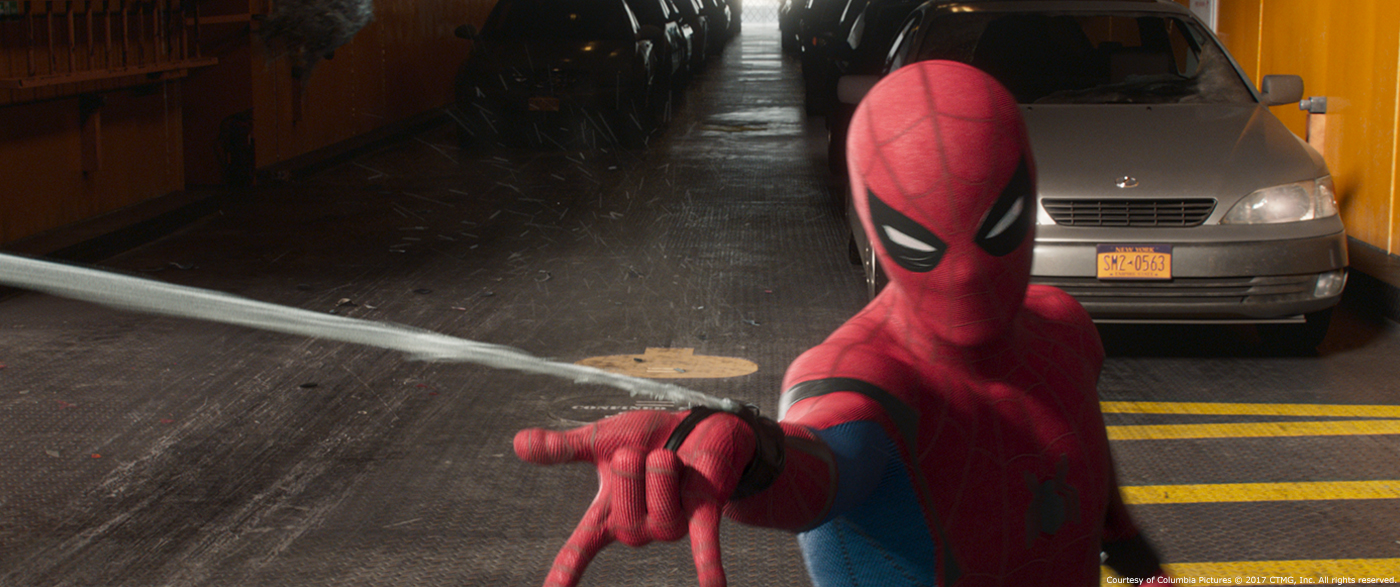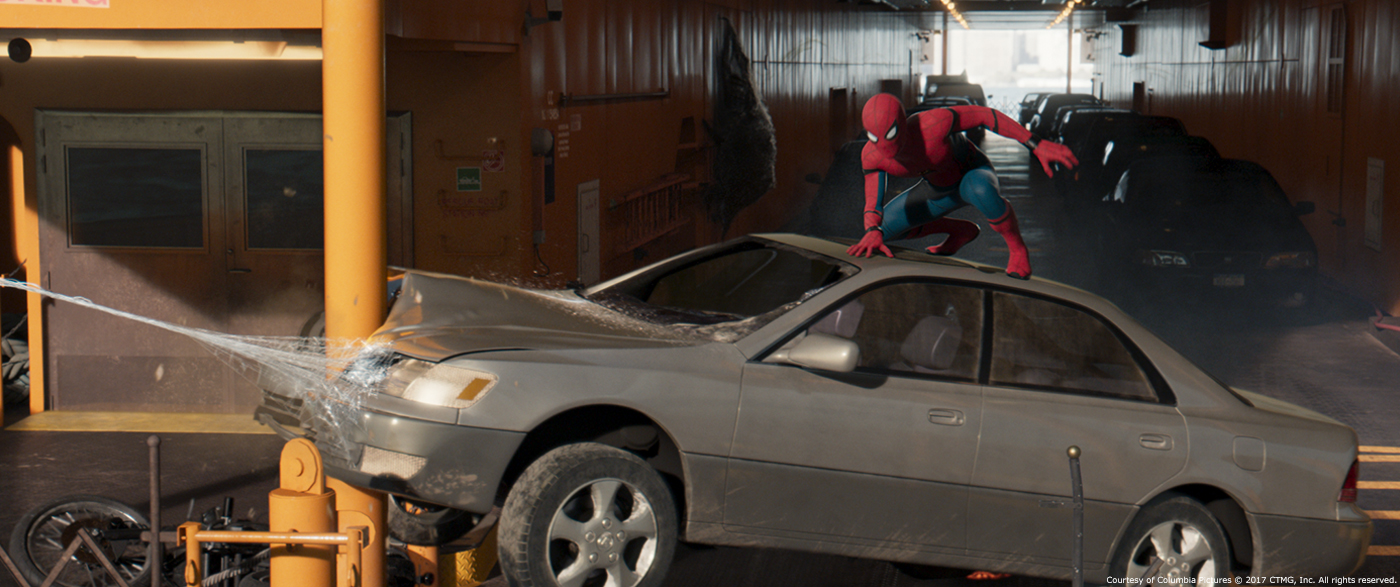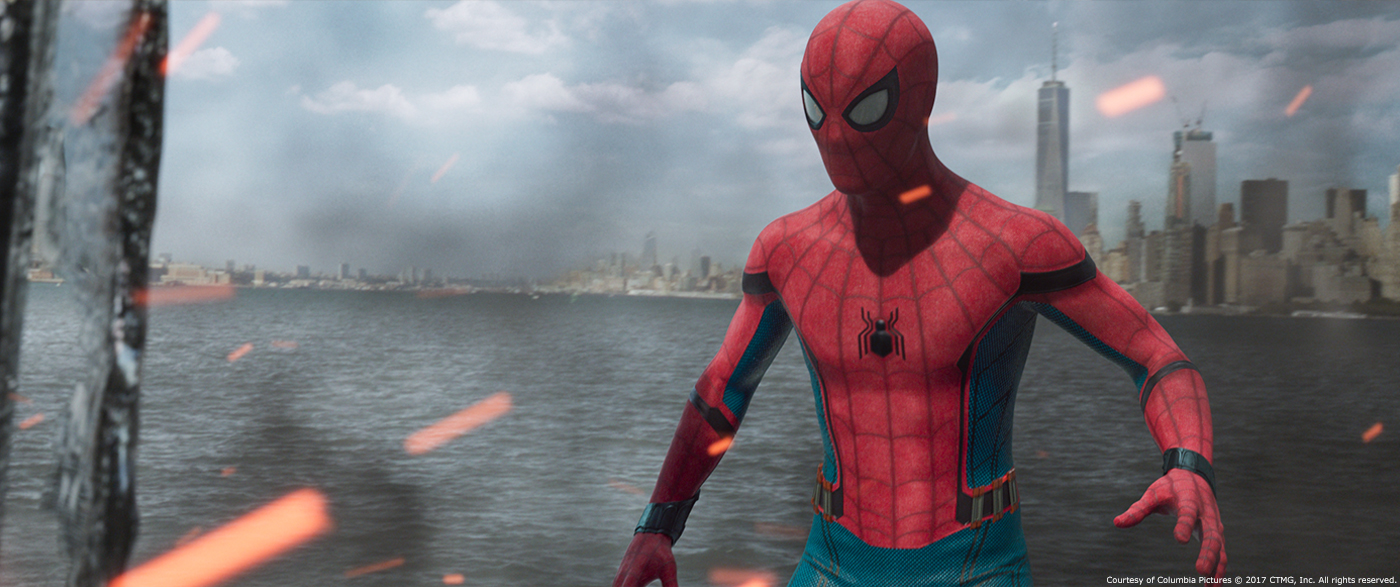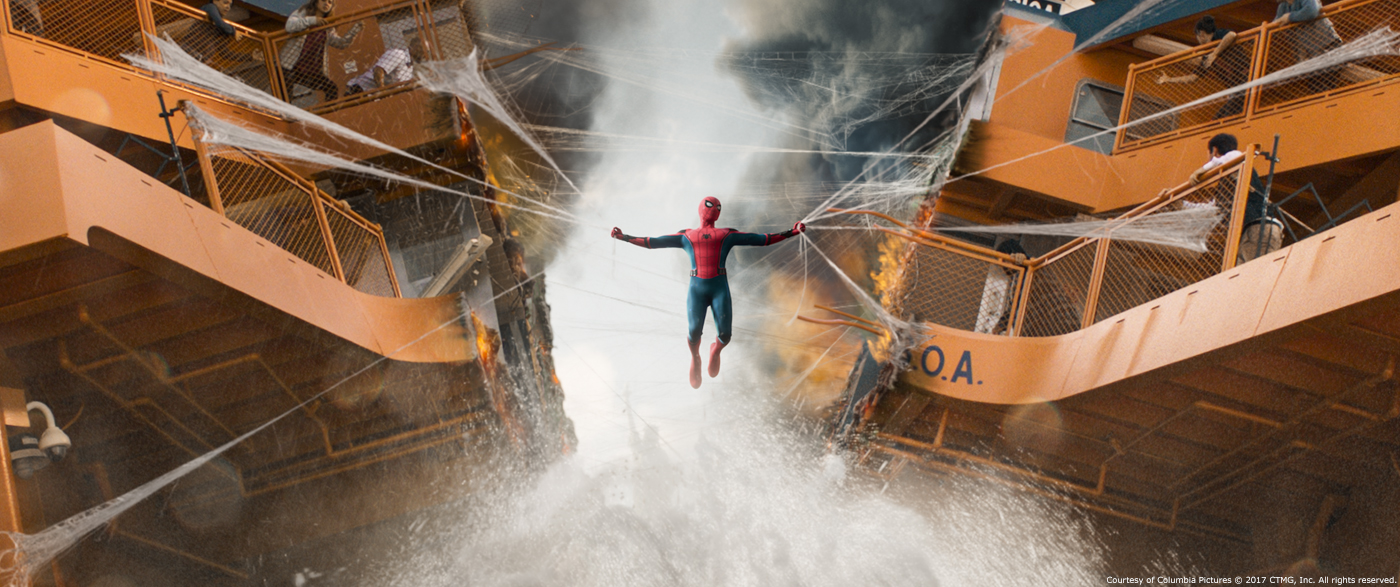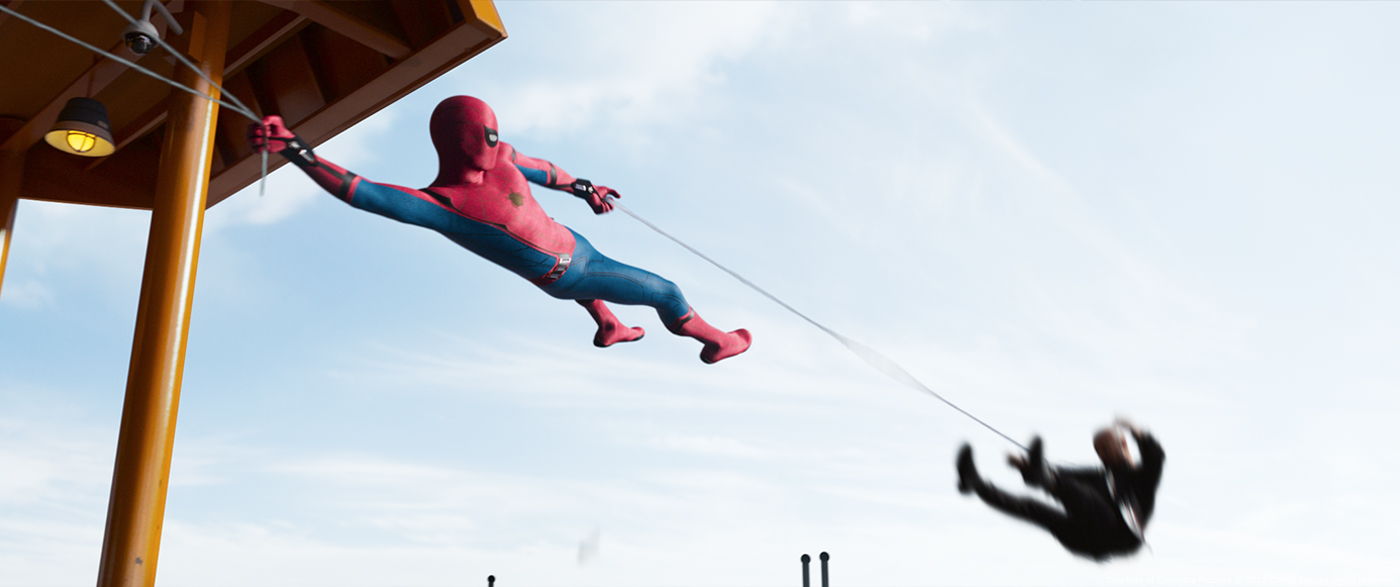In 2014, Lou Pecora explained to us about the work of Digital Domain on X-MEN: DAYS OF FUTURE PAST. He speaks to us today about his work on SPIDER-MAN: HOMECOMING.
How did you and Digital Domain get involved on this show?
We had done a lot of water work in the past -most recently the artists at Digital Domain had done some very complex and impressive work in BLACK SAILS for the water in a storm sequence. Since the Staten Island Ferry sequence had a lot of water in it, I think that helped us to get this work.
How was the collaboration with director Jon Watts and VFX Supervisor Janek Sirrs?
It was fantastic. From the first time I saw Jon on set, I could tell he was going to be the kind of Director that I love working with. He has great ideas, and knows what he wants, but is great about incorporating new ideas that make the sequence better.
Janek is like that too. In fact, the « Marvel way » is to serve the movie. By that I mean to make the best possible movie you can. They don’t let egos or titles get in the way of good ideas. If it makes the movie better, they go for it. That can be a little scary as time runs thin, but in the end all they want to do is make the best movie they can, and who can argue with that? So you tend to go that extra mile -dig that little bit deeper to pull out what you can. The passion they bring to the table is contagious for sure!
What was their approaches and expectations about the visual effects?
Well, after shooting, an edit gets assembled, and then Jon and the creative execs at Marvel start revising, and reshaping the sequence. Previs and live action start to get replaced with more developed temps from us and others, and the sequence starts taking on a more polished form. Then we keep revising and polishing until it’s done. Jon was great about listening to other ideas; ultimately he makes the call on which ideas make it into the film, but he welcomes input and ideas from the rest of us that are on the journey with him. One can’t ask for more than that.
What are the sequences made by Digital Domain?
We worked on the Staten Island Ferry sequence.
How did you organize the work at Digital Domain?
Since it was such a big, long, and complex sequence, we organized it by breaking it into mini beats. This allowed Leads to run point on either specific assets or specific action beats. For instance, the Vulture Fight was an action beat, but it was also the part that involved the Vulture the most. The Vent Shaft beat was it’s own thing with a Lead looking after that bit, Then there was the phone call Spiderman gets from Tony Stark, the Stitch up, where Spiderman tries to weave the ship back together, and so on. Each of those beats made the whole sequence easier to part out to various Leads to oversee the work.
Can you explain in detail about the creation of Spider-Man and Vulture?
Spiderman was a shared asset with Method Studios. They were primarily responsible for creating that asset. We took their model, textures, etc. and did our own look development to match in with the rest of the film.
Vulture Mk1 was our asset that we created based on photo reference, and scans of the costume. The most challenging thing about the Vulture costume, was of course the wings. It had to be made of individual panels that would slide over each other and articulate in a way that was believable, yet allowed the animators the freedom to move it in visually interesting ways. It was a rigging puzzle, that was handled by a rigger named Joe Spadaro. Some of the pieces and blades had to scale up and down inside the rest of the wing to hide the fact that there might not be enough space or clearance. Wherever possible we went through great lengths to build it in a way that you could build it for real. That mantra was always on our mind. If it can be built for real, if it could articulate in the real world, etc. then go for it.
Can you tell us more about the Spider-Man suit?
The suit was made of an interesting material. Not spandex, but had some properties of spandex. Additionally, there was a pass of a sort of tee shirt ink applied that added a real world type of characteristic to it. There are these little dots on it that add a level of real world detail that isn’t achievable with a procedural shader alone. Some of it was modeling detail, some was displacement, and some was hand painted.
Additionally, the suit had an odd sheen to it. There was a chromatic component to it; it would go a little more orange at certain angles and a little more blue at others. So calculating that into the shader and dialing it in in the comp was very important to Janek. It was a challenge to get it just right.
How did you handle their rigging and animation?
The whole thing with a strong character performance like the one Tom Holland delivered in this film is to capture the actor’s essence in the animated performances. To that end, there was a lot of mocap used to capture his mannerisms, his movement style, etc., but there was also a lot of very talented animators working tirelessly to match the general feel into the shots where mocap would be impossible. An example of that would be during the stitch up, when Spiderman stitches the Ferry together with his webs. Tom has a very playful nature, which really comes across both in his performance and his movement. He’s incredibly athletic and acrobatic. So animators were coming up with a lot of highly acrobatic flourishes that really worked and augmented the motion capture performances that Tom did so well.
What we found was that the more subtle the motion, the more we really needed that motion captured performance. The nuances are much harder to get perfect than when he’s swinging out over the chasm in the ship and trying to weave it back together. There the bigger movements and more extreme motion were better off using hand animated techniques.
Can you tell us more about the animation of Vulture in the air?
The biggest challenge Vulture brought to us was that he needed to feel big and heavy, but also fast and agile. Those things rarely coexist, to be honest. So we had to go in with a plan to pull those conflicting properties off. What ended up working best was to keep the action fast and agile in close ups and a little more lumbering and deliberate in the wides. This way the overall impression you walk away with is that it is a big, heavy mechanical contraption, but can move deadly fast when it needs to.
Did you received specific indications and references for their animations?
For Spiderman there was a ton of motion capture, and motion picture footage of Tom performing. He was on set in character and suited up in the Atlanta heat just as often as he could be. That was fantastic because it really allowed us to get a good sense of how he moves.
For Vulture, not so much. We hand animated all of that. I have a love of mechanical things robots, motors, gears, etc., so I drew a lot on that for my direction, but the talents of the animators really shined through in Vulture and Iron Man.
Can you tell us more about the various web lines of Spider-Man?
The webs were a really fun part of this show. In the end the material we chose to match was polar bear fur. It’s not a strand or line of white fur like you would think; it’s more of a hollow transparent tube that refracts light. So we found that to be a whole lot more interesting than just a white string. The challenge, of course was that backgrounds and comps had to be assembled in order to refract the scene through it properly and give the webs their signature look. The shapes were also important. In real life, finding straight lines in organic things is difficult. So we aways tried to make sure there was some sort of parabolic characteristic to the trajectories of the lines in the webs.
How did you created the huge New York environment and the ferry?
The environment was comprised of a combination of still photographs, motion picture tiles and cg water. The environments team at Digital Domain hand painted some cloud layers and touched up the harbor as well. We shots tiles from different places and different heights along the ferry’s path from the Battery Park terminal to the halfway point between the Statue of Liberty and Governor’s Island where it ends up.
The ferry was our biggest and most complicated asset. We had a partial set in Atlanta -basically the front/back of the boat. Since the 2 sides are symmetrical the only way you could tell is if the cars are facing you or facing away from you. We did a Lidar scan of that, and also had access to a docked Ferry for 2 days where we photographed the whole thing. We worked with a company called The Lidar Guys who scanned the whole Ferry top to bottom, inside and out. That became the basis for our model. We went through and cleaned up, optimized, and adapted some parts to make them work. The set and the real Ferry had some discrepancies of course, so in the end we had to stitch the Atlanta set piece onto the scan of the real Ferry in order to get tracking data and such to work.
Texturing and shader development for the Ferry was a monumental undertaking that involved many artists and many hours to complete.
And then we had to build another one -the damaged one! Of course we started with the intact Ferry, but many additions and deletions had to be made to the model of the Ferry, and many of the shaders and textures had to be changed or replaced to accommodate the damage that the Ferry suffered during the weapon malfunction.
During a fight, the ferry is cut in half. Can you explain in detail about this big destruction?
The weapon was another asset we had to think of in contradictory terms. It had to be a bit clunky, not elegant, and in general a brutish homemade prototype. On the one hand it had to have some force, recoil, etc, as it fired. It couldn’t lay down bursts like a machine gun or our web slinging hero would have been toast.
The idea of a capacitive recharge, like a camera flash was greatly aided by our friends in sound design. But once it had become overloaded by Spiderman’s tazer webs, it began to malfunction. And when the focusing crystal broke off and the gun began firing randomly and unfocused prior to Spiderman webbing it to the deck, it went through a sort of change in its capabilities and became more of a planar plasma cutter. Once it got webbed down, it fired out radially and sliced through the ferry and anything in its path. I love that moment after the big burst -and that sound. I love that sound they came up with for that big blast. There is a moment where you think…. what happened? Is it over? Is that it?
Then the ship starts to open up. Uh oh, it’s not over… it’s just starting! At this point we changed to our split Ferry complete with scorch marks, blasted edges and glowing cutlines. As it opens up we see a lot more of what’s stuffed between the decks, pipes venting steam, sparking wires, air ducts, and charred insulation. And the whole hting is opening up along it’s center axis. Coming up with a concept for the energy weapon took a few tries. We started with something akin to what had been in some previous AVENGERS films. But Jon wanted something different for this one. He kept going back to the idea of a line gun. Two beam rails and a pulse of energy flowing along them. The nice thing about this is that it allowed us to play with scale a bit where we needed to to go form the super close ups and the high and wides.
I love old monster movies so I kept trying to get the idea of a Jacob’s Ladder in there, and it’s there a bit in the final look. Jon preferred the cleanliness of a line gun, so that’s the dominating idea in the effect. I’m really happy with how it turned out. I feel like we struck a good balance between the more exotic force of the gun and some more terrestrial pyro smoke, fire, and sparks.
How did you manage these various water simulations and explosions?
Using the raw power of an army of talented effects artists, lots of processors, lots of Houdini licenses, and a lot of iterations, we muscled through the challenges of matching the practical water effects that Dan Sudick and his team executed on set. Dan puts a lot of thought and careful planning into everything he does, and it was a real treat to get to work with him and see him in action. Right down to a unique compound in his sparking material that causes the sparks to barb and split out into multiple sparks, Dan really elevates the craft in ways that were a lot of fun to try to match.
But that’s the small stuff…. he and his team built a rig that allowed the entire set to open up in about 10 seconds. From fully closed to fully opened in 10 seconds, and back to closed in another 12. It was amazing to watch it work in person. As impressive as the set rig was, nothing could top the dump tanks. Forty thousand gallons of water rushing down the length of the car tunnel in 8 seconds is a sight to behold. The benefit of all of this great practical special effects work was that we had a real, tangible, physically accurate target to match to. Sure we got more creative with stuff like the concussive blast and the various fires that light up the ship along the cutline, but the water and smoke had real world practical effects that we could match to. That removes a lot of guesswork, especially when it looks so good to begin with!
At the end of the sequence, Iron Man comes to the rescue. Can you explain in detail about his creation?
We started with a model from ILM from the last CAPTAIN AMERICA movie and modified it from there. Color schemes were modified, and inside details were added since the suit opens in our sequence. We also developed a whole set of custom shaders for the suit.
Digital Domain have already created Iron Man for IRON MAN 3. How did you enhanced this asset?
I’d love to say we used it, but the reality is that Tony Stark is not one to rest on his laurels. He is constantly upgrading the suit, so this asset is a whole new suit from the one we created for IM3.
What was the main challenge on this show and how did you achieve it?
I would have to say that the main challenge was that this show consisted of the full gamut in terms of types of work. This was a sequence that involved large, complex assets, highly articulate animation, lots of difficult particle and fx work, highly artistic beauty lighting, difficult and highly subjective environment work, and a lot of comping. Sometimes you only get a couple of those in a given show, but this one involved all of it.
So the biggest challenge was that there was not just one thing we could focus on. We had to retarget our efforts constantly to keep all of these complex intertwined pieces progressing in unison. The only way I know of to achieve a challenge like that is to get great people and empower them to own their piece of the bigger picture. Giving ownership and responsibility to motivated, passionate artists is, in my experience, the best way to get the best work. It’s also the most rewarding and the most fun. When artists are seeing the contribution they are making to the larger effort, the passion for the work and desire to strive for even more spreads and intensifies. I love seeing that.
What is your favorite shot and why?
Of course it is tempting to point to one of the big destruction shots, but I just love the shot where the Vulture cuts the web lines that hold him with his wings. To me, it really sets the stage for the relationship that Spiderman and Vulture are going to have both in costume and in their civilian personas. Spiderman is firing webs at a rapidfire pace, jumping around, really moving. Then Vulture just casually slices those efforts with a simple closing of the wing around he various weblines. I feel it effectively conveyed a sense of futility in Spiderman’s efforts and is an ominous foreshadow of what is about to happen
What is your best memory on this show?
Oh…. this is a tough one! So many things come to mind.
Being in Atlanta and New York for the shoots was really exciting and a lot of fun; and each day was an adventure. Seeing Tom relish the role and own it so completely was a delight as well.
If I had to pick one, though, it has to be the day I saw the Ferry rendered, lit and comped for the first time. I will admit that I was getting impatient and really wanted to see it for what felt like an eternity.
But when the team showed it to me for the first time in a wide aerial shot over cg water and a reconstructed background, I stopped for a minute and thought…. ok… it’s gonna be great. That memory has to take the top spot simply because it represented the meeting point of everything from the shoot and acquisition, to the combined efforts of every department on the team.
The best part of any show is getting to work with the brilliant people who’s incredible efforts combine into the finished shots. When you look at a list of credits, you see the names of mothers and fathers, husbands and wives, boyfriends and girlfriends -of people who are contributing their passion, their talent and their time to something that -when finished- will hopefully delight and inspire people. That idea is highly motivating for me, and it is what gets me excited to get to work in the morning and keep on coming back and thinking, « I can’t wait to see what the team has cooked up today! »
How long have you worked on this show?
We got the award last May I think. So just over a year.
What is your VFX shots count?
229.
What was the size of your team?
At one time or another 282 people worked on this film at DD, including artists, support staff, technical directors, and software support.
A big thanks for your time.
// WANT TO KNOW MORE?
Digital Domain: Dedicated page about SPIDER-MAN: HOMECOMING on Digital Domain website.
© Vincent Frei – The Art of VFX – 2017


